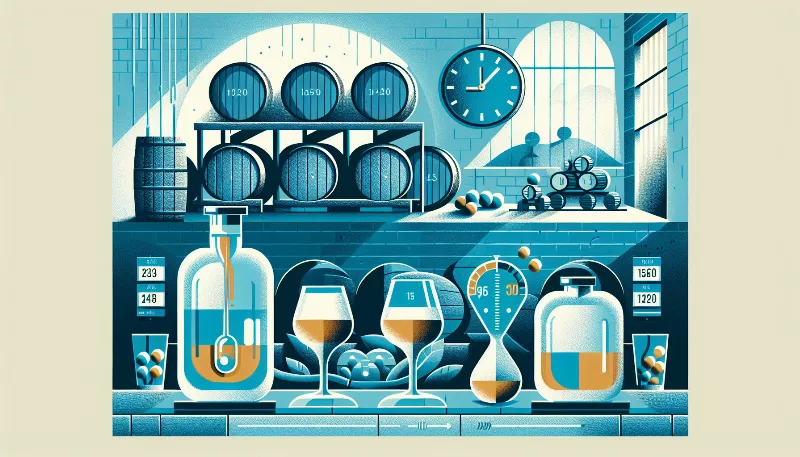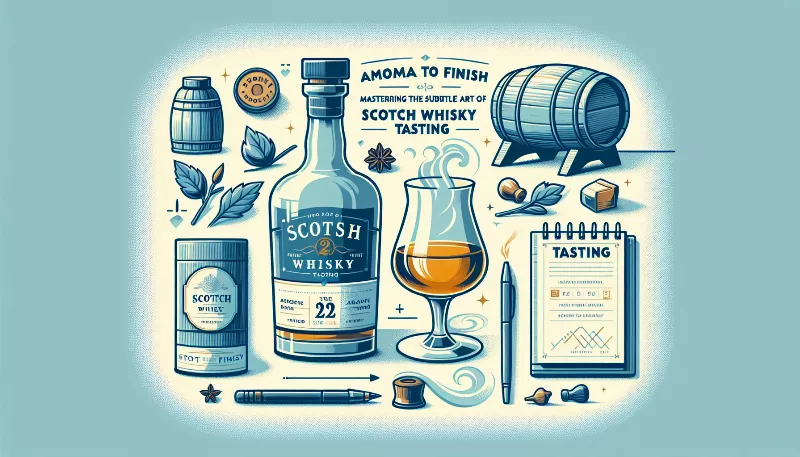How long must Scotch whisky be aged before it can be legally sold, and what impact does aging have on its taste?
Discover the legal aging requirements for Scotch whisky and how maturation enhances its flavors. Unlock the secrets of whisky aging now!

The Legal Minimum: A Journey Begins
Imagine a land of rolling green hills, ancient castles, and misty lochs. Now, imagine the golden liquid that embodies this mystical landscape: Scotch whisky. But before this elixir can tantalize your taste buds, it must embark on a journey through time. By law, all Scotch whisky must be aged in oak barrels for a minimum of three years. This isn't just a tradition; it's a legal requirement enshrined in the Scotch Whisky Regulations of 2009. The clock starts ticking the moment the new spirit is filled into casks, and not a second before. This aging process is non-negotiable, ensuring that every drop sold as Scotch whisky has been given the time to mature and develop its character.
The Alchemy of Aging: Transforming Spirit into Scotch
Aging is not merely a waiting game; it's an intricate dance between the whisky and the wood. As the seasons change, the casks breathe, expanding and contracting, allowing the whisky to seep into the wood and back out again. This interaction is where the magic happens. Over time, the harshness of the raw spirit mellows, and the whisky takes on complex flavors from the cask. Vanilla, caramel, and fruit notes are imparted from American oak, while European oak can give hints of dried fruit and spice. The longer the whisky ages, the more nuanced it becomes, gaining depth and a spectrum of flavors that can only be achieved through patience and time.
The Taste of Time: How Aging Shapes Flavor
But what exactly does aging do to the taste of Scotch whisky? It's a transformation that's both subtle and profound. In its youth, whisky can be spirited and fiery, with the raw edge of alcohol and the bite of cereal grain. As it ages, it softens and deepens, acquiring layers of flavor that range from the sweetness of honey and toffee to the smokiness of peat and the richness of dried fruits. The wood's influence also imparts a smoothness and a lingering finish that connoisseurs cherish. Each additional year in the cask allows for more interaction, more complexity, and a greater harmony of flavors. It's a testament to the adage that good things come to those who wait.
The Personal Touch: Beyond the Minimum
While three years is the legal minimum, many distillers choose to age their Scotch for much longer. Some premium whiskies slumber in their casks for decades, with 12, 18, or even 25 years being common milestones. These extended aging periods are not just for show; they represent a commitment to crafting a superior product. The distiller's choice of aging duration reflects their vision for the whisky's optimal character. It's a personal touch that turns each bottle into a narrative of time, place, and craft.
In Conclusion: The Essence of Scotch
In the world of spirits, Scotch whisky stands out for its dedication to the art of aging. The mandatory three-year aging period is just the beginning of a journey that can span decades. Each year in the cask adds another chapter to the whisky's story, enriching its flavor and enhancing its allure. So, the next time you raise a glass of Scotch, take a moment to savor not just the taste, but the time that has gone into making it. After all, Scotch whisky is not just a drink; it's time captured in a bottle, a liquid legacy of Scotland's heritage and craftsmanship.










